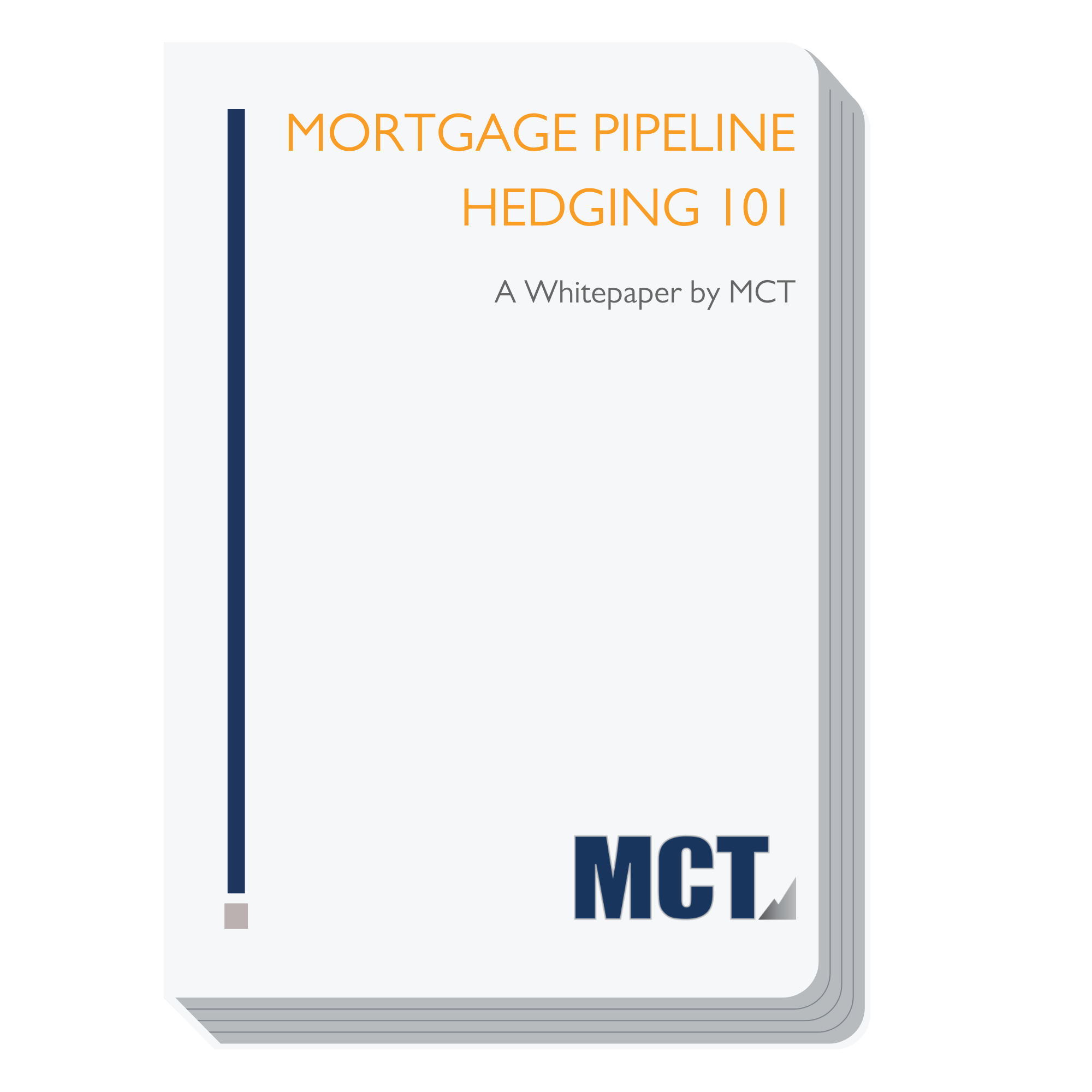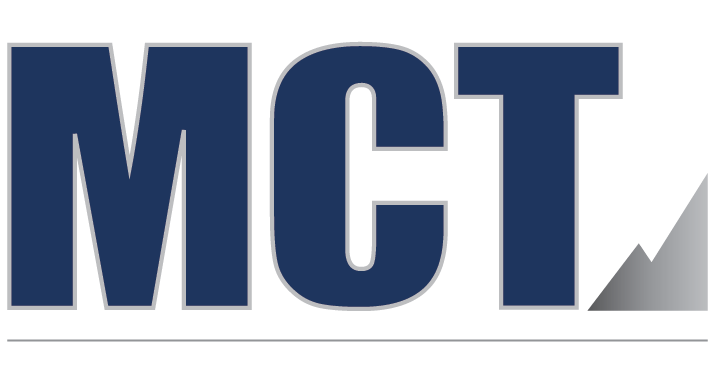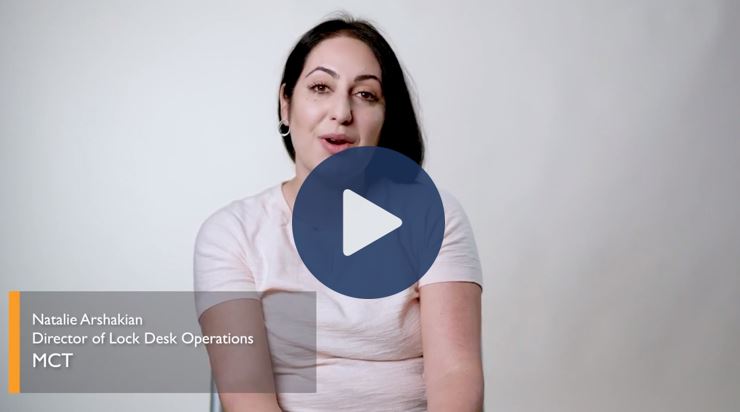In this article, we will present current mortgage rates and discuss the relationship between mortgage rates and the 10-year Treasury note, to help lenders understand the importance when assessing past, present, or future interest rate movement.
Why Do Mortgage Rates and Treasury Yields Move Together?
Historically, the 10-year U.S. Treasury yield has been considered a key benchmark for mortgage rates. However, mortgage rates are not actually based on the 10-year U.S. Treasury note (as is commonly believed).
Fixed mortgage rates and Treasury yields generally move together. Why? As a fixed-rate asset, mortgage-backed securities (MBS) are in direct competition with Treasury instruments for investor money.

For mortgages to stay competitive in the eyes of investors, the rates on mortgages inherently follow changes in Treasury yields. Learn more about current rates for mortgage rates as well as the current and past 10-year treasury yield curve to see if following the movement of the 10-year Treasury yield will tell you the direction fixed mortgages rates will go.
What is the Meaning of 10-year Treasury Yield?
The 10-year Treasury yield is what the United States government pays investors that purchase the specific security with a maturity of 10 years upon initial issuance, and is generally considered risk-free. Essentially the 10-year treasury yield is the current rate investors would pay if they bought them today and can be viewed as an indicator of economic growth.
How Do Treasury Yields Affect the Economy?
The treasury note often serves as a signal about the market’s expectation and future growth, so the fact that it has recently increased is reflective of the economic growth, but also parallels the fact that inflation is also at an all time recent high. Because the treasury notes are so commonly traded, their interest rate also serves as a signal about the market’s expectations of future growth.
When markets expect the economy to grow, forecasts for treasury notes will reflect that in a higher interest rate. In fact, one harbinger of recession is an inverted yield curve, when the return on 3-month treasury bills is higher than the ten year rate. While this does not always lead to a recession, it certainly signals pessimism from financial markets.
What are the Mortgage Rates Today?
The current mortgage rates are shown below in this chart for 5/1 Yr ARM, Jumbo 30 Yr, FHA 30 Yr, 15 Yr Fixed, 30 Yr Fixed and it auto updates so visit this page each day to see the new mortgage rates!
After the following chart on the 10 year treasury yield curve, read on to learn if and how the mortgage rates are tied to the 10 year treasury notes.
What is 10-Year Treasury Yield Today and the Treasury Yield Curve?
Compare this chart with the mortgage rates chart to see how the 10-year treasury and mortgage rates are correlated. Read more below to learn how mortgage rates are tied to the 10 year treasury yield. View raw data on U.S. Department of the Treasury website.
Read Related Content on 10-year Treasury and Mortgage Rates:
Ready to dive deeper? Download our latest whitepaper!

Further Reading:
How Do U.S. Treasury Instruments Affect Interest Rates?
The U.S. Treasury Department sells bills, notes, and bonds at auction to pay for the U.S. debt, setting the face value and interest rate.
Treasury notes are safer than any other bond because the U.S. government guarantees them from default. The modest return (i.e., the 10-year Treasury note traded under 1% for much of 2020) is offset by the extreme safety of the asset.
The U.S. Treasury issues notes in terms of two, three, five, and 10 years. Bonds are issued in terms of 30 years. Bills are issued in terms of one year or less. Treasury yields change every day because they are constantly being sold on the primary and secondary markets.
Do you know the term bills?
Treasury securities with terms of one year or less are called “bills.”
“Notes” are for securities with maturities of two to 10 years, and “bonds” are for 30 years.
How Does Demand for Treasuries Affects Interest Rates?
Anything (news or otherwise) that increases the demand for longer-term Treasury bonds puts downward pressure on interest rates.
If there is a lot of demand for Treasuries, the price will go (up) above the face value and the yield or total return on investment will decrease.
The opposite is true, in which case an investor would pay less to receive the stated interest rates, increasing yield.
What is the Relationship Between Price and Yield?
Price and yield always have an inverse relationship.
Put another way, when yields are low, demand is high and the government doesn’t have any trouble selling these bonds to investors.
When yields are high, demand is low and the government is looking to incentivize investors with higher interest rates.
Why Do Higher Yields Attract Investors?
Any bond or debt security that contains greater risk than that of a similar Treasury bond must offer a higher yield to attract investors. Investors compare the interest rates of all fixed-income products and weigh that return with their risk appetite.
That means comparing yields on short-term Treasuries with certificates of deposit (CDs) and money market funds, and yields on long-term Treasuries with MBS and corporate bonds.
- A stronger economy tends to make corporate (private) debt more attractive than government debt, which means prices go down and yields go up to attract investor interest.
- A weaker economy, on the other hand, promotes a “flight to quality,” increasing the demand for Treasuries (and often Agency MBS), which creates lower yields.

How are Bonds Influenced by Treasury Yields?
Is the 10-year treasury yield curve and mortgage rates also related to bond yield?
The spread or gap between Treasury and mortgage prices is to keep the mortgage asset attractive to investors despite the greater risk of prepayment or default. You can probably draw the correct conclusion that all bond yields are influenced to some degree by Treasury yields because those returns are competing for the same type of investor. If Treasury rates rise, other bonds must also increase their rates to attract investors.
The simplest explanation for why the 10-year U.S. Treasury garners the most attention in the mortgage world is because the assumed duration of a 30-year mortgage (before payoff or default) is 7 years. The closest Treasury security in duration to that is the 10-year note.
It is important to remember that U.S. Treasury yields only are a benchmark for fixed-rate mortgages. For ARMs, the Fed funds rate, or rate banks charge each other for overnight loans needed to maintain their reserve requirement) that has the most impact. That is because the Fed funds rate influences both LIBOR and the prime rate, two benchmarks used in pricing adjustable-rate loans.
The interest rate spread between the 10-year Treasury and conforming/conventional mortgages has historically been a shade under to 2 percent. There have been times in the past, notably 2009, where Treasury rates started to decline and mortgage rates did not follow. When the opposite is true and spreads tighten, MBS become less attractive.
As an example, who wants a 3.125 percent Ginnie Mae MBS when you can get 3 percent from a risk-free 10-year Treasury? Also, the flexible nature of principal payments from pass-through mortgage securities means investors need to constantly assess that risk when determining what prices to pay for bonds.
How is Investor Sentiment Influenced by 10-year Treasury Yield?
Treasury yields are a function of monetary policy and general economic conditions. Beyond just the rate of return an investor can expect, Treasuries are used as a sign of investor sentiment: how confident investors feel in the current economy.
When demand is high, it often means the stock market and economy aren’t looking great and investors want a “low risk” investment. When demand is low, it means the economic outlook is good and the return on other investments, such as stocks and mortgages, are better.
MBS drive the fluctuations in mortgage rates rather than Treasury yields.
The risk factors account for the higher yield on mortgage-backed securities and the rate spread between Treasury bonds and mortgages, but the interest rate trends on Treasury bonds can be used to roughly predict the rate trends for fixed-rate mortgages.
Though the two do not move in lock step, by following the movement of the 10-year Treasury yield, one can gain a sense of which direction fixed mortgages rates will go.
Stay Abreast of Economic Trends with MCT
 With a trusted capital markets partner like MCT, you can rest assured that you will be notified of how economic trends could have the potential to impact your business.
With a trusted capital markets partner like MCT, you can rest assured that you will be notified of how economic trends could have the potential to impact your business.
Sign up for MCT’s newsletter to receive educational articles like this one or read our related articles below to learn more about variables that may impact mortgage rates.
Interested to learn more about market volatility best practices? Explore our market volatility guidance for lenders or find related articles below.
Join our Newsletter for Daily Market Commentary
Read related articles to the 10 year treasury yield vs. mortgage rates content below:


